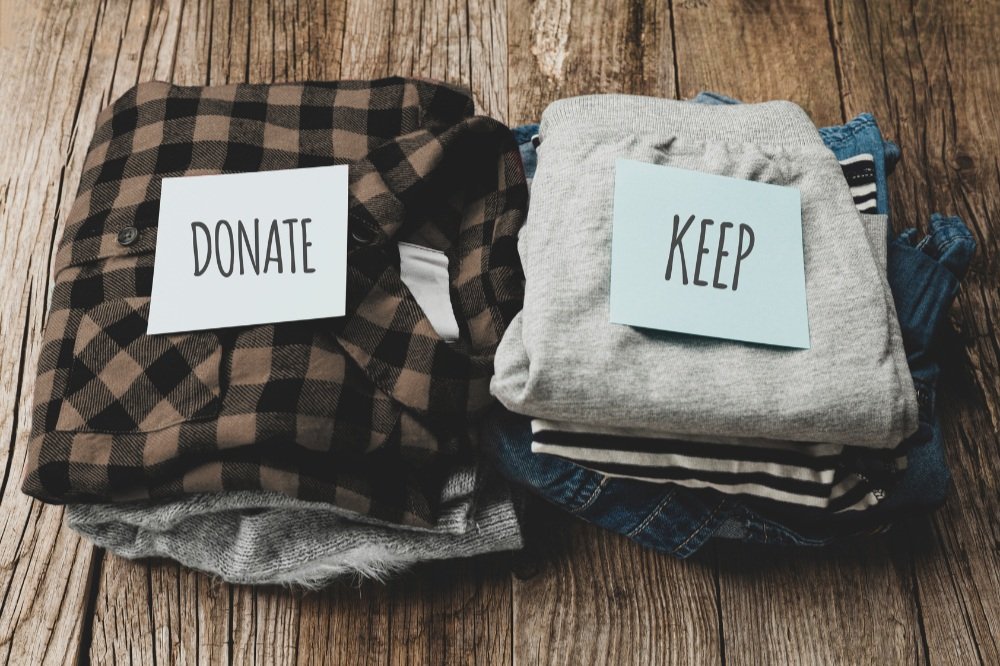Decluttering: Small Shifts, Big Breaths
Decluttering isn’t just about tidying up. It’s about making your space feel easier to live in. Less distraction. Less decision fatigue. More calm.
When your environment feels clearer, life often does too. It can help reduce overwhelm, save you time, and give you that tiny-but-mighty sense of control. You don’t have to blitz the whole house. You just have to start — at your pace, in your way.
1. Start Small. Keep It Doable.
Trying to clear out the whole house in a weekend? That’s a fast track to burnout. Instead, pick one drawer. One surface. One bag of “not sure what this is.”
Set a timer for 10–20 minutes — or use a playlist or podcast episode as your “soft limit.” When it ends, so do you. Done is better than perfect.
If timers stress you out, go with vibes. The point is to start — not to sprint.
2. Create Zones, Not Chaos
Forget the whole room. Zoom in. Just the top of the dresser. Just the fridge door. Just the bedside table.
If your mind jumps around, try using masking tape or trays to visually “fence in” the area you’re working on. It helps make the task feel bite-sized — and gives your brain a finish line.
3. Try a Gentle “Joy Check”
The KonMari question — Does this spark joy? — is great for some things (like jumpers and mugs), but not everything sparks anything (hello, USB cables and old screwdrivers).
So ask instead:
– Do I use this?
– Does it make life easier?
– Would I miss it if it disappeared?
And if it’s just sitting there making you feel guilty? That’s not value — that’s pressure. Let it go.
4. Closet Clearouts = Quick Wins
Clothes are a great place to find momentum. If it hasn’t been worn in over a year, doesn’t fit your lifestyle, or just feels “ugh” on your skin — it’s probably time to pass it on.
Struggle to remember what you wear? Try coloured dot stickers, a hanger flip, or even snapping a pic of your “go-to” outfits. Visual cues help when memory’s not your strong suit.
Want to rehome things? Apps like Vinted or Depop are easy ways to give them a second life (and make a bit back too, if that helps).
5. Storage That Works With (Not Against) Your Brain
Forget the one-size-fits-all storage hacks. The best system is the one that makes sense to you.
Need to see things to remember they exist? Use clear containers, open shelves, or pegboards. Prefer visual quiet? Go for drawers, lids, and labels.
Group things by how you use them — not where you bought them. All the tea stuff in one box. All the cords in another. Keep everyday items at eye level so you’re not constantly bending, stretching, or searching.
You don’t need it to look “Pinterest-worthy.” You just need to know where stuff goes.
Dunelm £49
6. Give Everyday Stuff a Home
Always losing keys, remotes, or earphones? You’re not forgetful — they’re just homeless.
Create a “landing pad” for the things that vanish: a tray by the door, a hook, a box on the counter. Label it if that helps your brain connect the dots. Use words, colours, or even icons — whatever clicks.
It’s not about being perfectly organised. It’s about cutting down the number of micro-decisions your brain has to make.
JOIN IRON £36.46
7. Make Decluttering Feel Safe (Even Nice)
Decluttering can stir up big feelings — decision fatigue, guilt, even grief. So be gentle with yourself.
Pair it with something comforting: music, a nice scent, your favourite snack, or a fidget/stim object nearby.
Take before-and-after photos if it helps you see your progress. And if letting go feels too final, try a “maybe box.” Label it with a future date and come back to it in a few months.
You don’t need to feel excited or ruthless. Just curious. Just ready enough to try.
This isn’t about getting it “right.” It’s about making space feel a little more yours — one shelf, drawer, or sock at a time.
Progress can look like a clear table. An easier morning. A calmer mind.
And that’s more than enough.



